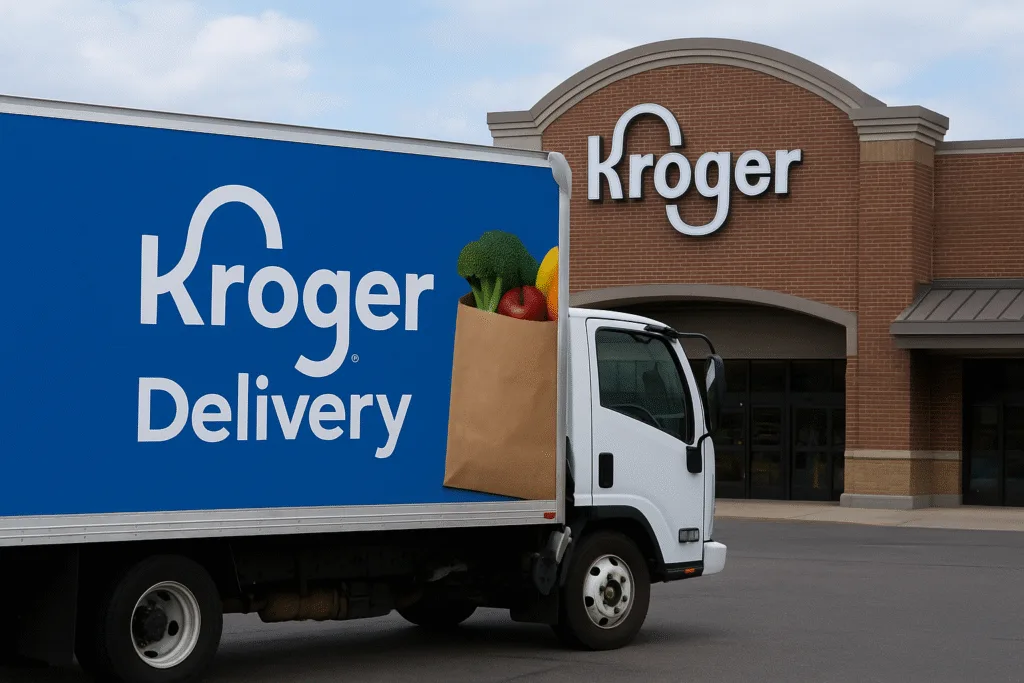Kroger Home Delivery Shutdown: What It Means for the Future of Grocery E-Commerce
Kroger Shuts Down Home Delivery Services in Key Regions: What Went Wrong?
In a move that has sent shockwaves through the grocery and e-commerce industries, Kroger has announced the shutdown of its dedicated home delivery services in select regions. Once hailed as a future-proof strategy to challenge the likes of Amazon and Walmart, the closure signals a dramatic pivot in Kroger’s digital strategy and raises questions about the sustainability of standalone grocery delivery models.

Kroger, one of the largest supermarket chains in the United States, had invested heavily in high-tech customer fulfillment centers (CFCs), developed in partnership with UK-based Ocado Group. These robotic warehouses were meant to revolutionize online grocery ordering, processing thousands of orders daily with minimal human intervention. However, just a few years after its aggressive expansion, Kroger is pulling back, closing delivery operations in certain areas where profitability has remained elusive.
A Costly Experiment
The company launched its home delivery push with great ambition. From the Ocado-powered CFCs to a fleet of delivery vans, Kroger aimed to transform how Americans shop for groceries. Yet the economics didn’t add up. Despite high consumer demand during the pandemic, delivery volumes have dwindled, operational costs have soared, and competition has intensified.
According to industry insiders, the high cost of maintaining the automated warehouses, coupled with increased fuel prices and labor shortages, made it difficult for Kroger to sustain its delivery operations profitably. Some analysts point out that the strategy may have been too narrow, relying on fixed fulfillment models that struggled to adapt to changing consumer behaviors and geographic challenges.
Which Markets Are Affected?
The shutdown affects several regions that were early adopters of the Kroger Delivery service, including parts of Florida, North Carolina, and Southern California. These closures not only impact customers but also result in layoffs and operational restructuring.
For example, the Groveland, Florida fulfillment center — once a flagship location — has reportedly ceased operations. Hundreds of jobs tied to that facility have been affected. Similarly, the Raleigh-Durham area in North Carolina is seeing service discontinued just months after it launched. In many of these regions, Kroger lacked a strong physical store presence, which made last-mile logistics increasingly difficult.
What’s Next for Kroger?
Kroger isn’t exiting the e-commerce space entirely — far from it. Instead, the company is refocusing its strategy on more sustainable models such as curbside pickup and hybrid fulfillment options. A Kroger spokesperson emphasized the importance of aligning digital investments with customer demand and long-term financial health.
“We remain committed to serving our digital customers,” the spokesperson said. “Our decision to discontinue delivery operations in these areas allows us to reallocate resources toward more efficient fulfillment methods.”
The company is expected to lean more heavily on store-based fulfillment and partnerships with third-party delivery platforms like Instacart and DoorDash, which offer greater flexibility and lower overhead.
Industry Implications
Kroger’s retreat from direct home delivery signals broader challenges for the grocery e-commerce sector. While digital grocery sales spiked during the pandemic, growth has since plateaued. Consumers are now more cost-conscious, opting for in-store deals and pickup services rather than paying premium delivery fees.
Walmart and Amazon — both of which have significantly more scale and infrastructure — continue to dominate the grocery delivery space. Smaller players and traditional grocers, meanwhile, face mounting pressure to compete without bleeding profits.
Customer Backlash
Customer reactions have been mixed. Some loyal users of Kroger Delivery services expressed frustration over the abrupt change. “This was my go-to for groceries every week. Now I have to figure out an alternative,” one Florida resident shared on social media. Others, however, welcomed the decision, citing inconsistent delivery times and higher prices as major drawbacks of the service.
Conclusion
Kroger’s decision to shut down parts of its home delivery network marks a major turning point in grocery e-commerce. As the industry matures, only the most flexible and cost-efficient models are likely to survive. For Kroger, the path forward lies in balance — blending the convenience of digital services with the operational strengths of its vast brick-and-mortar network.
The lesson for other retailers? Bigger doesn’t always mean better — and when it comes to last-mile delivery, innovation must go hand in hand with sustainability.